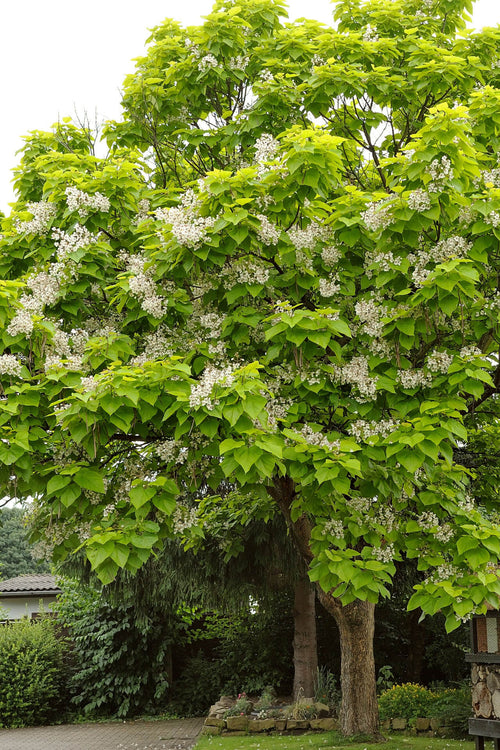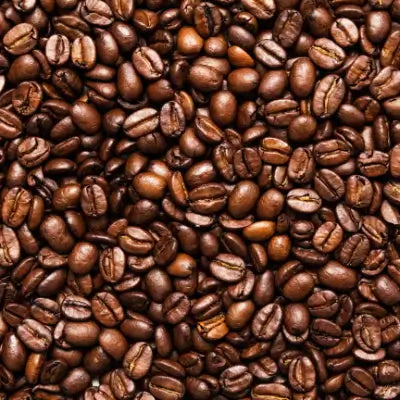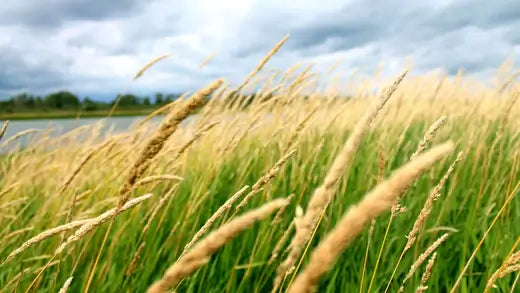Five Varieties
Trees are the #1 landscaping staple there is. A well-maintained backyard can be a sanctuary, a place to relax and unwind. However, only some have the time or expertise to dedicate to high-maintenance landscaping. Thankfully, many low-maintenance tree options can add beauty and character to your backyard without requiring constant care. This article will explore five of the best low-maintenance trees for expressive-looking backyards, focusing on Catalpa, Japanese Maple, Cypress, Crab Apple, and Crepe Myrtles.
Catalpa Trees
Catalpa trees, scientifically known as Catalpa bignonioides, are native to the southeastern United States and are renowned for their large, heart-shaped leaves and distinctive bean-like seed pods. They make a fantastic addition to low-maintenance backyards for several reasons.
- Minimal Pruning: Catalpa trees typically have an open and spreading canopy that requires minimal pruning. Occasional trimming is needed to remove dead or diseased branches and maintain their shape.
- Drought Tolerance: Once established, Catalpa trees are relatively drought-tolerant, meaning they won't require constant watering. They do well in various soil types and adapt well to different conditions.
- Pest Resistance: These trees are known for resisting many common pests and diseases, reducing the need for chemical treatments or constant monitoring.
- Ornamental Value: Catalpa trees produce stunning clusters of white, trumpet-shaped flowers in the late spring, attracting pollinators like bees and butterflies. Their large leaves provide ample shade during the hot summer, creating a comfortable outdoor space.
- Low-Maintenance Seed Pods: While the seed pods can be messy when they fall in the autumn, they do not require immediate cleanup, making them relatively hassle-free.
Japanese Maple Trees
Japanese Maple trees, or Acer palmatum, are cherished for their elegant, finely divided leaves and their stunning display of colors throughout the year. These trees are a top choice for low-maintenance backyards for several reasons.
- Minimal Pruning: Japanese Maples have a slow growth rate and maintain their compact, graceful shape with minimal pruning. It would be best to prune in late winter or early spring to remove dead or crossing branches.
- Year-Round Beauty: These trees are known for their exquisite foliage, ranging from deep red to vibrant green, depending on the cultivar. In the fall, they put on a spectacular show of fiery colors that can enhance the visual appeal of any backyard.
- Adaptability: Japanese Maples can thrive in various soil types and light conditions. They become hardy and resilient trees with proper care during the establishment phase.
- Low Pest Susceptibility: No tree is entirely immune to pests and diseases. However, Japanese Maples are less prone to infestations and illnesses than many other species, reducing the need for chemical treatments.
- Low Water Requirements: Once established, Japanese Maples have moderate water needs and can tolerate short periods of drought. This reduces the time and effort required for watering.
Cypress Trees
Cypress trees, including varieties like Leyland Cypress (Cupressocyparis leylandii) and Bald Cypress (Taxodium distichum), are well-suited for low-maintenance backyards due to their unique features.
- Fast Growth: Cypress trees are known for their rapid growth, which means they can quickly provide privacy and greenery to your backyard without frequent maintenance.
- Disease Resistance: Many cypress varieties are naturally resistant to common diseases and pests, which reduces the need for chemical interventions.
- Drought Tolerance: Once established, cypress trees are relatively drought-tolerant, so you won't have to worry about constant watering during dry spells.
- Evergreen Beauty: Cypress trees are evergreen, providing year-round beauty and privacy. Their fine-textured foliage adds a touch of elegance to any landscape.
- Low Maintenance Pruning: While occasional pruning may be necessary to shape the tree or remove dead branches, cypress trees require less maintenance than other fast-growing trees.
Crab Apple Trees
Crab Apple trees (Malus spp.) are known for their charming spring blossoms and ornamental fruit, making them an excellent choice for low-maintenance backyards.
- Beautiful Spring Blooms: Crab Apple trees burst into a riot of color during the spring, producing fragrant, pink, or white flowers that attract pollinators. Attractive Fruit: After the blooms fade, many crab apple varieties have small, colorful fruit that can add visual interest to your backyard. Birds often relish these fruits.
- Adaptability: Crab Apple trees can thrive in various soil types and climates, making them suitable for multiple regions.
- Low Pruning Requirements: While some light pruning may be necessary to shape the tree or remove dead wood, crab apple trees generally only require a little maintenance.
- Low Pest Susceptibility: While they can be susceptible to certain pests and diseases, crab apple trees are usually hardy and less prone to issues than fruit-bearing trees.
Crepe Myrtles
Crepe Myrtles (Lagerstroemia indica) are beloved for their vibrant summer blooms and attractive bark, and they are an excellent choice for low-maintenance backyards.
- Long Blooming Season: Crepe Myrtles produce showy, crepe-paper-like flowers in a range of colors from late spring through summer, adding a burst of color to your backyard.
- Exfoliating Bark: These trees also feature attractive, exfoliating bark that provides year-round visual interest.
- Drought Tolerance: Once established, Crepe Myrtles are drought-tolerant, requiring minimal watering.
- Resilience: Crepe Myrtles are generally hardy and less susceptible to pests and disease. Their resistance reduces the need for chemical treatments.
- Low Pruning Needs: While occasional pruning may be required to maintain their shape and encourage blooming, Crepe Myrtles only demand a little care.
Creating an expressive and visually appealing backyard can be something other than a high-maintenance endeavor. By choosing low-maintenance trees like Catalpa trees, Japanese Maple trees, Cypress trees, Crab Apple trees, and Crepe Myrtles, you can enjoy the beauty of nature without the constant upkeep. These trees offer a variety of colors, shapes, and textures, which can enhance the aesthetic appeal of your backyard while allowing you to relax more and enjoy your outdoor space. With proper care during their establishment phase, these trees can thrive with minimal effort, making them the perfect choice for busy homeowners who still want a beautiful and expressive backyard retreat.


















































